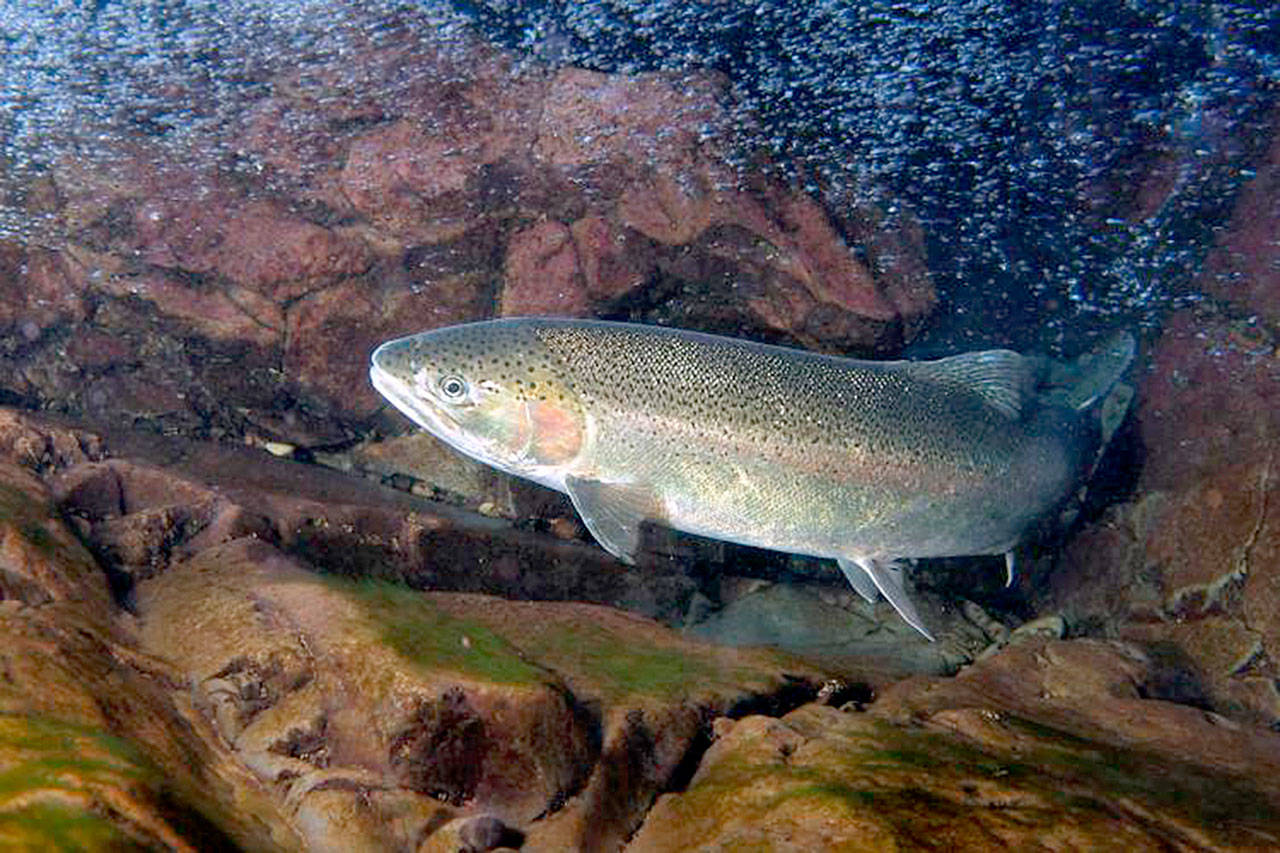PORT ANGELES — A recent study, with its roots going back to 2004, has showed promising news that Elwha River steelhead trapped for a century miles from the Strait of Juan de Fuca by the Elwha River dams have managed to maintain their natural genetic diversity during that time and are able to return to their old natural cycle of returning to the sea.
The study was conducted by National Oceanic and Atmospheric Administration scientists. It was published in the journal Genes in January as part of a special issue on salmon and steelhead genetics.
Agencies involved in the study include NOAA, the National Park Service, the Lower Elwha Klallam Tribe, Washington State University and Trout Unlimited.
Biologist and research scientist Krista Nichols said the origins of the study go back to 2004, when scientists began collecting genetic data on the Elwha River steelhead in anticipation of the dams being removed. The Elwha Dam was removed in 2012 and the Glines Canyon Dam was removed in 2014.
The study is continued good news for the return of the Elwha River steelhead fishery. In snorkel surveys during the summer of 2019, scientists found encouraging signs about the rebound of the summer steelhead, with an estimated 920 fish returning up the river.
Scientists speculated that some of the returning steelhead were coming from rainbow trout ancestors trapped above the dams. This study helps confirm that.
The steelhead trapped up the river by the dams became landlocked rainbow trout, basically the same species as steelhead, but without the lifecycle in saltwater.
“[Scientists] examined samples from before and after the two major dams were removed about 10 years ago. The study suggests that those blocked from the ocean by dams retained the genetic diversity needed to resume their ocean-going migrations when the dams came out,” according to a NOAA press release on the study.
Scientists said the study highlighted steelhead/rainbow trout’s amazing ability to adapt to different conditions. When the steelhead were trapped behind the dams, they were able to adapt to a rainbow trout lifecycle. With the path clear to the Strait of Juan de Fuca, they’re able to adapt to a freshwater/saltwater lifecycle despite being blocked from returning to the sea for 100 years.
“It wasn’t a huge stretch for them to return to rainbow trout,” said Nichols.
“The genetic diversity harbored behind the dams suggests that diversity was important for their natural resilience, or their ability to adapt to changes such as dam building or removal,” said Alexandra Fraik, a doctoral student at Washington State University. Fraik did the work as a National Science Foundation graduate research internship program fellow with NOAA.
“Additionally, we see recolonization of steelhead that appear to descend from populations that were both below and behind the Elwha River dams rapidly following dam removal,” Fraik said.
Nichols said the study shows there are distinct groups below, in between and above the dams and that steelhead have ancestries from a number of the distinct genetic groups after the dams are removed.
To view the study, people can go online at www.tinyurl.com/34hat5qu.

